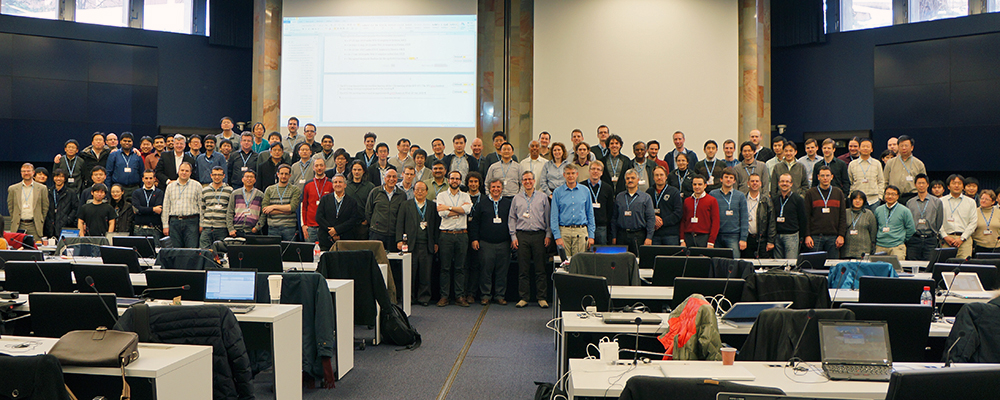
A technology standard that helps deliver ultra-high definition video to everything from smartphones to stadium displays will receive an Emmy® Award on October 25. The 2017 Primetime Emmy Engineering Award, from the Academy of Television Arts & Sciences, was announced Wednesday.
“HEVC is about twice as good in terms of compression as the standard that came before it. That means if you want to store video on a hard disk or send video over the internet for a given level of quality, it would take you only half as many bits using the new standard,” said Gary Sullivan, who works on these standards as an engineer with Microsoft’s research organization and serves as co-chair of the team that developed the standard.
Microsoft Research Podcast
Collaborators: Holoportation™ communication technology with Spencer Fowers and Kwame Darko
Spencer Fowers and Kwame Darko break down how the technology behind Holoportation and the telecommunication device being built around it brings patients and doctors together when being in the same room isn’t an easy option and discuss the potential impact of the work.
The Emmy for HEVC, which stands for High Efficiency Video Coding, will be awarded to the Joint Collaborative Team on Video Coding (opens in new tab). The JCT-VC is a group of engineers from the Video Coding Experts Group (opens in new tab), better known as VCEG, of the International Telecommunication Union (opens in new tab) and the Moving Picture Experts Group (opens in new tab), better known as MPEG, of the International Organization for Standardization (opens in new tab) and the International Electrotechnical Commission (opens in new tab).
The team that developed the HEVC standard included representatives from about 200 industry and academic institutions around the world.
The art of video compression lies in algorithms that find and predict similarities and differences between the previously sent frames and the current frame and only transmit signals for the parts of the frame that change. Each frame is segmented into blocks of various sizes, and the algorithms are applied to each block of each frame.
HEVC allows for larger maximum block regions than the earlier standard, and the block regions can be subdivided or merged in a variety of different ways. “The flexibility of the block partitions is a core technology in HEVC from which everything becomes more efficient,” said Jens-Rainer Ohm, who directs the Institute for Communications Engineering at RWTH Aachen University in Germany and co-chairs the JCT-VC with Sullivan.
The evolution of video compression, Sullivan noted, loosely follows the evolution of computer processing power – and encoding with HEVC requires several times more processing power than with the previous standard.
Using the higher resolution and increased pixel precision needed for ultra-high definition television also requires about five times more memory and processing speed than ordinary high definition television. Advances in computer hardware have enabled these increases in memory and processing speed, and nearly all ultra-high definition televisions are equipped to handle HEVC.
“People want their video to be as high quality as possible,” noted Sullivan. “They are also consuming more video than ever.” The HEVC standard, he explained, allows more video, and higher quality video, on the available bandwidth.
As computer processing and display technology continues to evolve, he added, so will compression standards. “A lot of new innovations are still happening and expected.”
Related:
- SPIE: Gary Sullivan and team to receive an Engineering Emmy (opens in new tab)
- Joint Collaborative Team on Video Coding (opens in new tab)
- 69th Engineering Emmy Awards Recipients Announced (opens in new tab)
- Video Coding Experts Group (opens in new tab)
- International Telecommunication Union (opens in new tab)
- Moving Picture Experts Group (opens in new tab)
- International Organization for Standardization (opens in new tab)
- International Electrotechnical Commission (opens in new tab)

